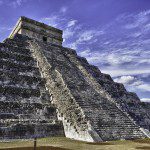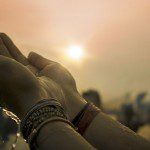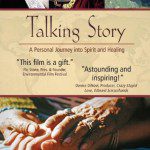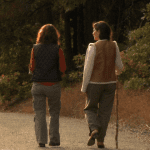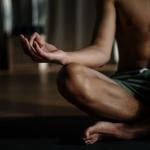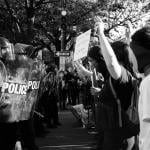 How will you look back when you reach the end of your days? How will you consider the life you have lived? Will you come to the revelation of how much you have grown, and how you have overcome fears? Will you see your life as a school where you learned of the healing and inspiring influence of unconditional love?
How will you look back when you reach the end of your days? How will you consider the life you have lived? Will you come to the revelation of how much you have grown, and how you have overcome fears? Will you see your life as a school where you learned of the healing and inspiring influence of unconditional love?
There is in fact nothing more certain than the inescapable certainty of death. Knowing this we do sometimes turn our attention to what impact our life might have after our death.
However, we don’t often enough turn our attention to what impact our inevitable death can have on our life right now.
Through the documentary film Death Makes Life Possible, you are invited to look through the lens of death as an opportunity to live your life’s greatest aspirations.
In this compelling documentary, which premiered on OWN (Oprah Winfrey Network) last Fall, executive producers Dr. Marilyn Schlitz and Deepak Chopra explore central questions about life and death, and how our answers to these vital questions impact how we live our lives.
In an exclusive interview Dr. Marilyn Schlitz, author of “Death Makes Life Possible,” discusses tools to facilitate conversation surrounding death.
BJB: With the documentary, Death Makes Life Possible, you explore how understanding death can inform how we live our life. What have you found is the biggest misconception about the fear that stifles the conversation about death and dying?
MS: Well, that’s it, it’s the fear. We live in a society that has vilified death. For example, if you grow old or die, you’re a “loser.” When in fact everyone dies, and it’s a natural and inevitable part of our process of transformation. We need to begin to shift how society defines that and begin to transform that so it can inspire us to live optimally. I think it’s the denial around mortality that can lead to these kind of aberrant behaviors.
There’s a very rich tradition around the topic of Terror Management Theory and the idea that we are all going to die; many people in many different cultures have created these mechanisms for denial. This often leads to pathological behaviors like aggression and identifying the other as the object of our contempt, rather than recognizing our common humanity; so to the extent we can begin to transform and re-define the fact that we are denying this so deeply, and bring it up from the depths of our repression out into the light, we can talk about it in a way that isn’t scary and instead invite in a conversation. I think this can be very healing.
BJB: Do you think the ultimate fear around death is the fear that life simply ends and there is nothing else, or more about the fear of living an unfulfilled life?
MS: I think it’s both. I think in addition to fear there is the worldview of nothingness that says we’re nothing more than our physicality and when we’re dead, we’re done. I interviewed Michael Shermer in the film, who is the head of Skeptic Magazine and he talked about that worldview. I think also there are different cosmologies, religions and worldviews that make the thought of the afterlife very frightening for people.
I think it can be three things: the fear of nothingness, the fear of a somethingness that maybe punitive and the third could be a sense of loss or grief of not fully living life. The solution to all of that can be healing that relationship, and transforming ourselves, so that we can reflect on these questions and talk to each other. If we deny mortality knowing that we’re going to die, without communicating ideas to someone of what we would like to have when we die, we ultimately lose the opportunity to have that transformation in the way we intend.
BJB: It is a bit difficult to get around the resistance to talk about death with family members. It seems that if people were willing to be softer around the topic of death, and release the harshness of it, there could be a space created for discussion.
MS: That’s kind of why we have the film. It’s beautiful, with nice music and some humor and lightness as well as sadness. We think it offers an opportunity for people to watch it together and have a conversation about something that came up during the film. It doesn’t have to be directed toward, ‘What are you going to do?’ It can be more general, and as you said a softer way of having a conversation. One of the things we encouraged people to do around the premiere of the documentary on the OWN Network is to watch it with others. Have a conversation about what comes up for you. What touched you? What made you curious?
BJB: Was there a defining moment surrounding your research about death that could not be explained as a coincidence, or synchronicity, that led you to want to go deeper into this work and make the documentary?
MS: My story starts when I was exploring the world at 18 months-old and discovered a can of lighter fluid. I put it in my mouth and ended up in intensive care. Although I don’t remember them, I know seeds were planted at that time. I developed a deep reverence for health professionals and also an impermeable place for living and dying.
I was also in a motorcycle accident when I was 16 years-old that was very serious. I was hit by a drunk driver. I had an out of body experience when I flew off of the motorcycle and remember watching my body fly through the air. Until this day I can see it. That experience was an insight about consciousness for me, and the notion of being more than just our physical being with extended reaches.
BJB: As a researcher, author and anthropologist studying the role of consciousness in healing, what have you found is the single most important factor to initiate the body’s internal healing capacities?
MS: I think we need to develop our own inner resilience in order to match the outer complexities of our time. To the extent that we came become resilient we can create buffers within ourselves that can help positive stresses, but not to have the detrimental effects of negative stresses on our body, mind and spirit. For me, consciousness and our inner awareness becomes an amazingly powerful healing modality.
I’ve come to think of healing as a nested set of relationships.
There’s that part of ourselves, and our organs, that are in relationship and when everything is healthy, they’re in right relationship. We can use noetic skills (inner directed) such as meditation, prayer or guided imagery to help us to be in balance. Also, of course, there are the family relationships that we also try to find the right balance so the relationships are healthy and nurturing.
I would add in terms of healing are our environment, being in nature amongst the sense of the sacred to experience a sense of connection that comes when we’re in a beautiful forest, or in our garden and in touch with the natural order of things. It’s important to recognize that we take in toxins from the environment that lead to ill health. Finally I would say there’s that spiritual piece and how do we find ourselves as something fundamentally interconnected and greater than our own individual ego.
I think when we’re in right relationship there, all else can be perturbed and we still have that sense of balance.
BJB: What have you learned that has left you a definitive believer in reincarnation?
MS: I’m a questioner more than a believer. The evidence for reincarnation is really compelling. The University of Virginia has collected thousands of case reports of people who remember past lives and have documented them.
BJB: If emotions and memory survive the death of the brain, why is it that some people have recognition and can remember past lives when others cannot?
MS: I would assume that as we have different talents, we have different capacities; and I wonder where these capacities come from.
BJB: Although death can be an isolating experience, what can death teach us about our connection to one another?
MS: If people don’t deal with their mortality and repress the fact that we are denying this so deeply, and then are triggered by something that reminds them of their mortality, they can become very insulated with their in-group. So those people who ‘share my values and share my worldview’ become the focus of my connection. Those people who are different from me become the other.
We can do very aggressive things toward the other because we don’t see them as the same. So I like to talk about death awareness for peace because once we can facilitate this inter-faith dialogue, we can help people find their common humanity and transform the polarizations that characterize violence in the world.
There are so many taboos in our culture about talking about death. What I appreciate about the premiere on OWN is that this documentary launched a month of ‘Belief’. OWN went around the world to explore different religions and truth systems. Death Makes Life Possible was the springboard into a month of exploring beliefs, differences and the opportunity to explore it all. My goal with the film is to provide tools to make it easier to facilitate the conversation surrounding death.
BJB: Is there an additional part of the conversation surrounding death that is not being addressed?
MS: What’s fascinating is the movement around death awareness covering many domains like green burials, green mortician work, death cafes and even dying with dignity.
Many of us have questions that linger around the purpose of our life and what significance it should hold. The perpetual questioning can serve as evidence that each of us is here for a vital reason. We can feel eternity in our hearts and that we were made for more than what we have allowed.
If we are willing to ask the deeper question posed by Deepak Chopra in the film, “Who am I really?” perhaps somewhere deep within us we can awaken the internal memory that death was never intended to be our end.
Through examining our perspective, beliefs and fears we will allow ourselves to face life and death with confidence, because you will know that you experienced a life well-lived and this will not be the end.
If you would like more information on Dr. Marilyn Schlitz, or to download the facilitators guide, please visit MarilynSchlitz.com or deathmakeslifepossible.com.



